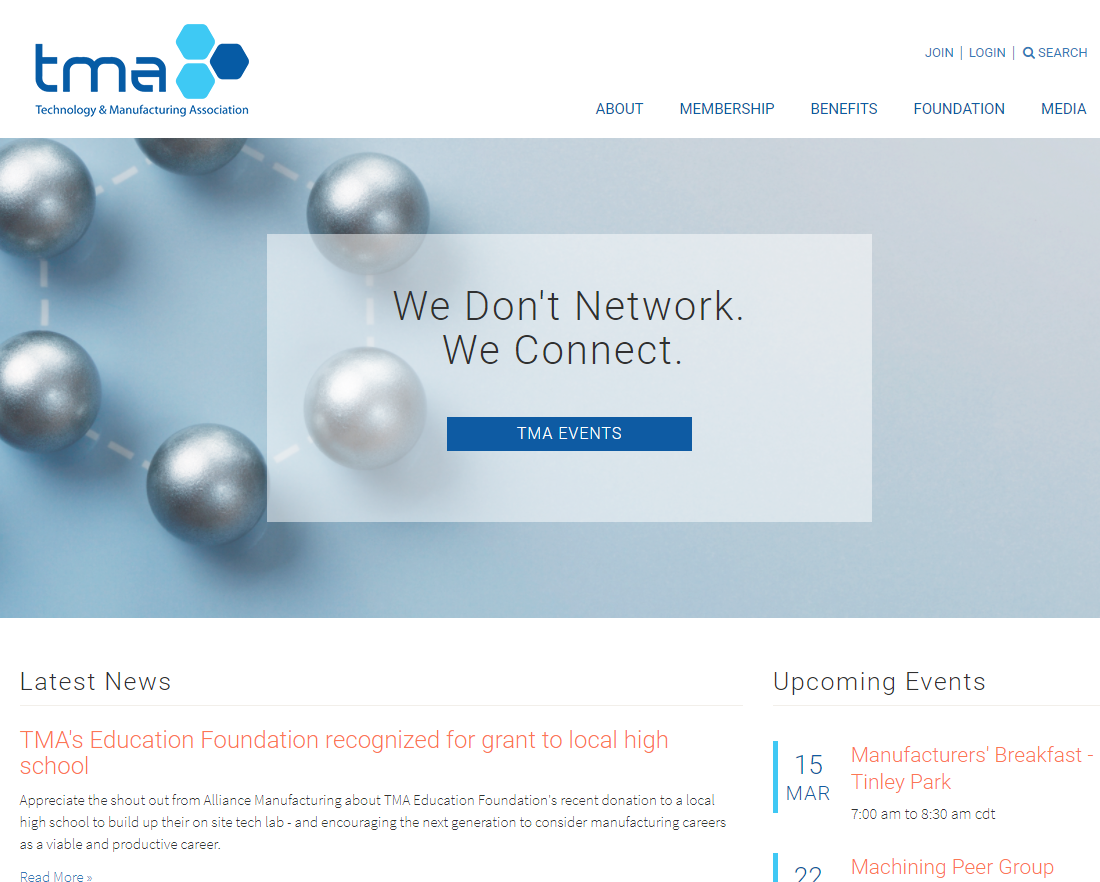Managing Workplace Diversity In 2018
Share

Indeed, the manufacturing segment was pulled in when the New York Times exposed alleged sexual harassment at two Chicago area Ford plants, featuring employee complaints and lawsuits that went back over 20 years.
America’s 2018 workplace is very different from the 1960’s “Mad Men” era – and eliminating sexual harassment is just one part of much broader employee protections included in current anti-discrimination statutes, TMA affiliate and Human Resource advisor Karla Dobbeck told TMA’s News Bulletin.
“When I’m talking sexual harassment, I’m talking about all discrimination,” she said. “Harassment and discrimination are lumped into one.”
In the context of civil rights law, unlawful discrimination generally refers to unfair or unequal treatment of an individual (or group) based on certain characteristics, including age, disability, ethnicity, gender, marital status, national origin, race, religion and sexual orientation. One form of gender discrimination is harassment, which is most often defined as “the act of systematic and/or continued unwanted and/or demeaning actions of one party or a group, including threats and demands.
So the discussion should be broader than inappropriate sexual advances between employees. It should also include discrimination based on an array of reasons.
Employees have several options open to protect themselves from discrimination or harassment at the state and federal levels. If they work at companies with over 15 employees, they can file complaints with the federal Equal Employment Opportunity Council (EEOC). If an Illinois company has less than 15 employees, the employees can file with the Illinois Department of Human Rights. Many times, complaints filed with one agency will be duplicated by the other agency.
“We encourage companies to do all they can to correct the situation before a complaint ever gets to an outside agency,” Dobbeck said. “The goal normally is to correct the problem and keep the complaint in-house.” But that can happen only if the situation is handled correctly from the start.
While Dobbeck emphasized that she’s not a lawyer, she shared five things her human resource firm and the EEOC encourages employers to do to avoid workplace discrimination and harassment:
1. Put a company policy in place that provides examples of what is inappropriate behavior and clearly lists classes legally protected from discrimination
2. Establish separate discrimination and harassment reporting systems for employees
3. Immediately investigate any complaint by interviewing the one being harassed and the one accused of harassing, plus any other witnesses
4. Activate a specific plan to end that harassment or discrimination situation
5. Train employees about what behavior is appropriate and what isn’t
“Sexual harassment is covered under the gender section of Title VII of the Human Rights Act. There is no specific ‘sexual harassment’ law,” Dobbeck said. “It’s considered under the gender discrimination law.”
There are two specific types of sexual harassment and both must be taken seriously, she said. One is any kind of discomfort due to a “hostile work environment” when the employee asked the offender to stop and it keeps going on, Dobbeck said. The other is “quid pro quo,” which, in Latin, means “something for something.”
There must be a “tangible employment action” which is based on the employee’s acceptance or refusal of a proposition for sexual activity or dating. A tangible employment activity could be a promotion or demotion, raise or salary reduction, moving to a more favorable place or termination, to name a few.
Whether or not the discomfort or proposal takes place at the worksite itself, if the situation originated because of a working relationship, it can be considered discrimination or harassment.
Allowing such a situation to continue can be costly to a company or the accused person, as well. There is a $100,000 cap on individual accountability at the federal level.
Employers must be careful to keep accurate records of how they handled the situation, Dobbeck said. “Punitive damages are higher if you can’t show that you’ve actively tried to correct the situation.”
And it’s very important that employers do not punish a person making such a complaint of harassment or discrimination.
“Any action against the complainer can be viewed as retaliation and any such retaliation is just as illegal as the harassment or discrimination in the first place,” Dobbeck said. The complainer doesn’t have to be satisfied with how the employer handles the complaint – the employer just needs to make the offensive activity stop.
Dobbeck said the workplace culture has been changing for years, and as laws and policies have evolved some employers have mistakenly chosen to ignore the situation.
The good news is the media focus over the celebrity harassment in the past several weeks has startled many into reviewing their company’s status.
“It’s good to see that so many more are understanding the seriousness of the situation better now,” Dobbeck said.
Dobbeck’s firm, Human Resource Techniques, Inc. in Dundee, IL has provided human resource advice to hundreds of TMA members over the past twenty plus years and has developed employee policies and training that cover HR topics and more.
For more information, see their website at www.askhrt. com or email at Karla kdobbeck@askhrt.com.
From TMA’s January 2018 News Bulletin


